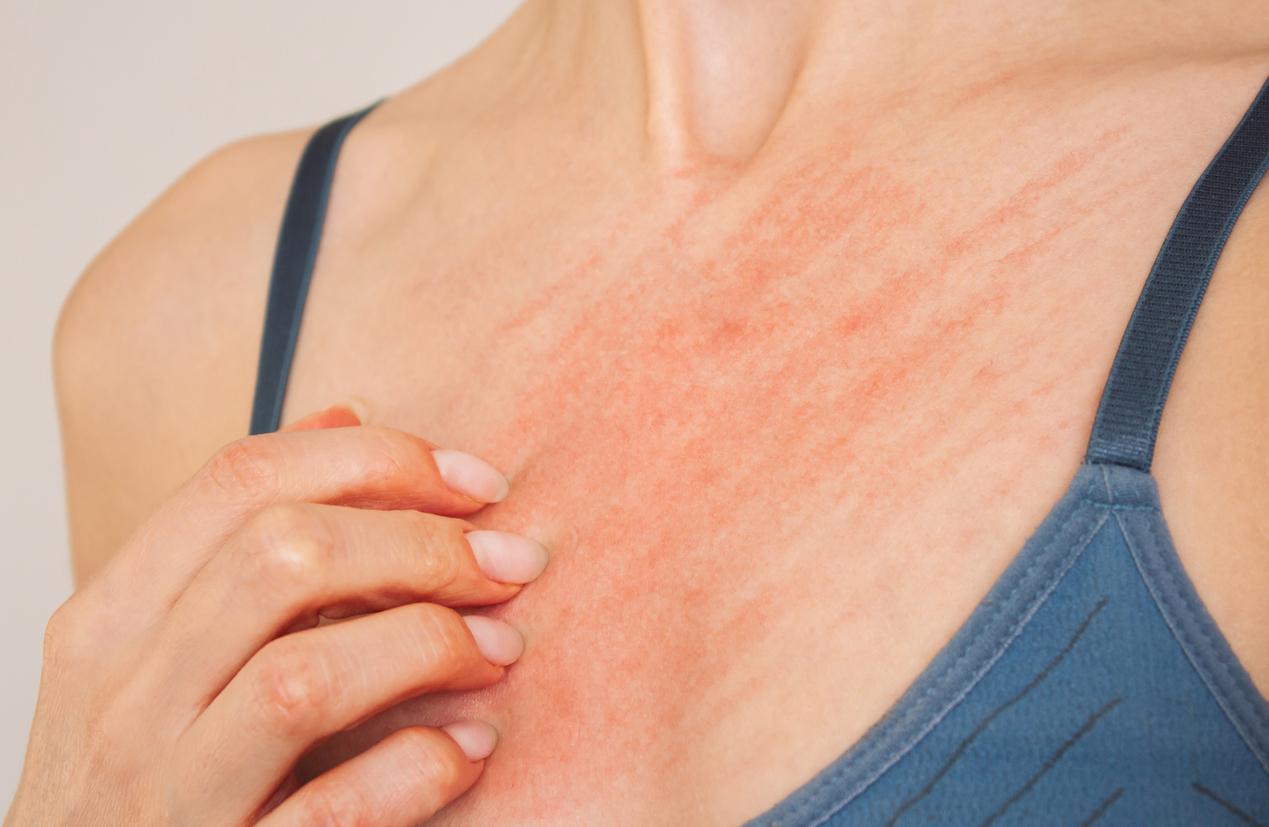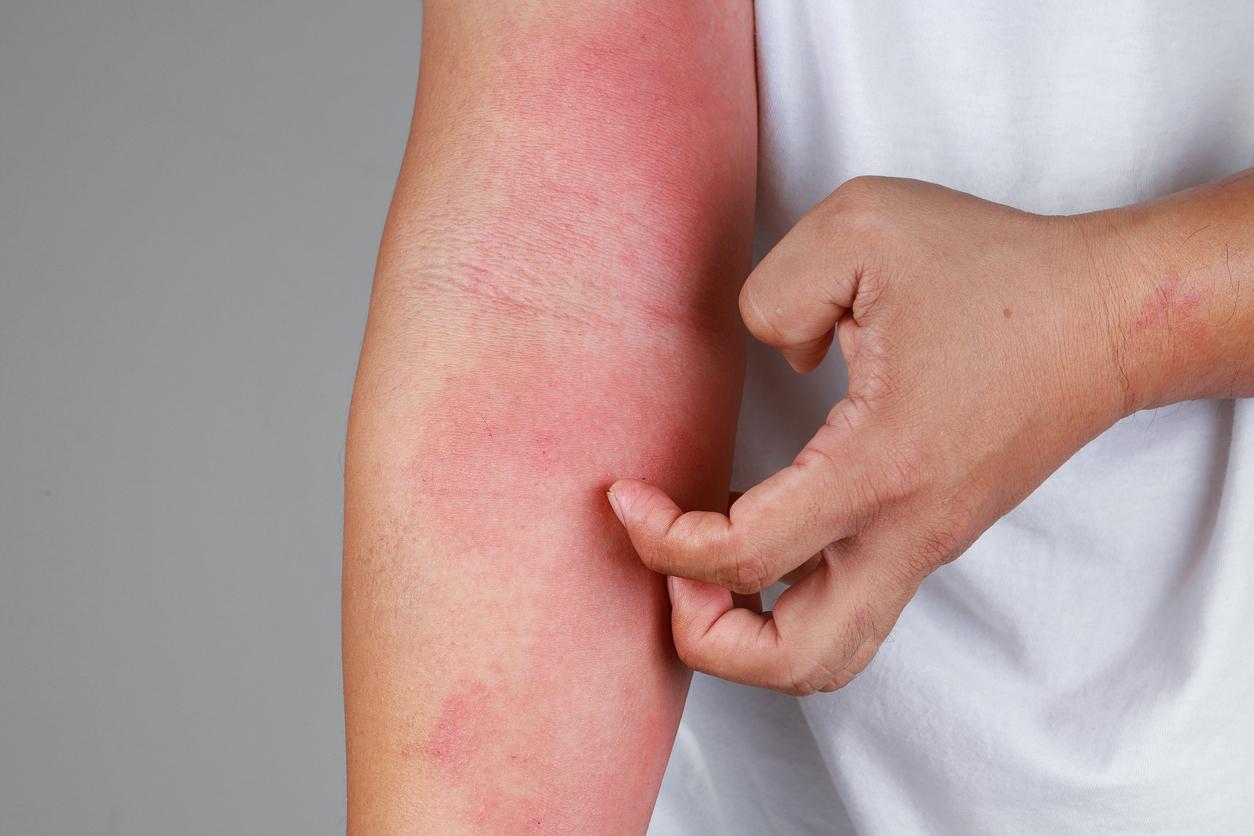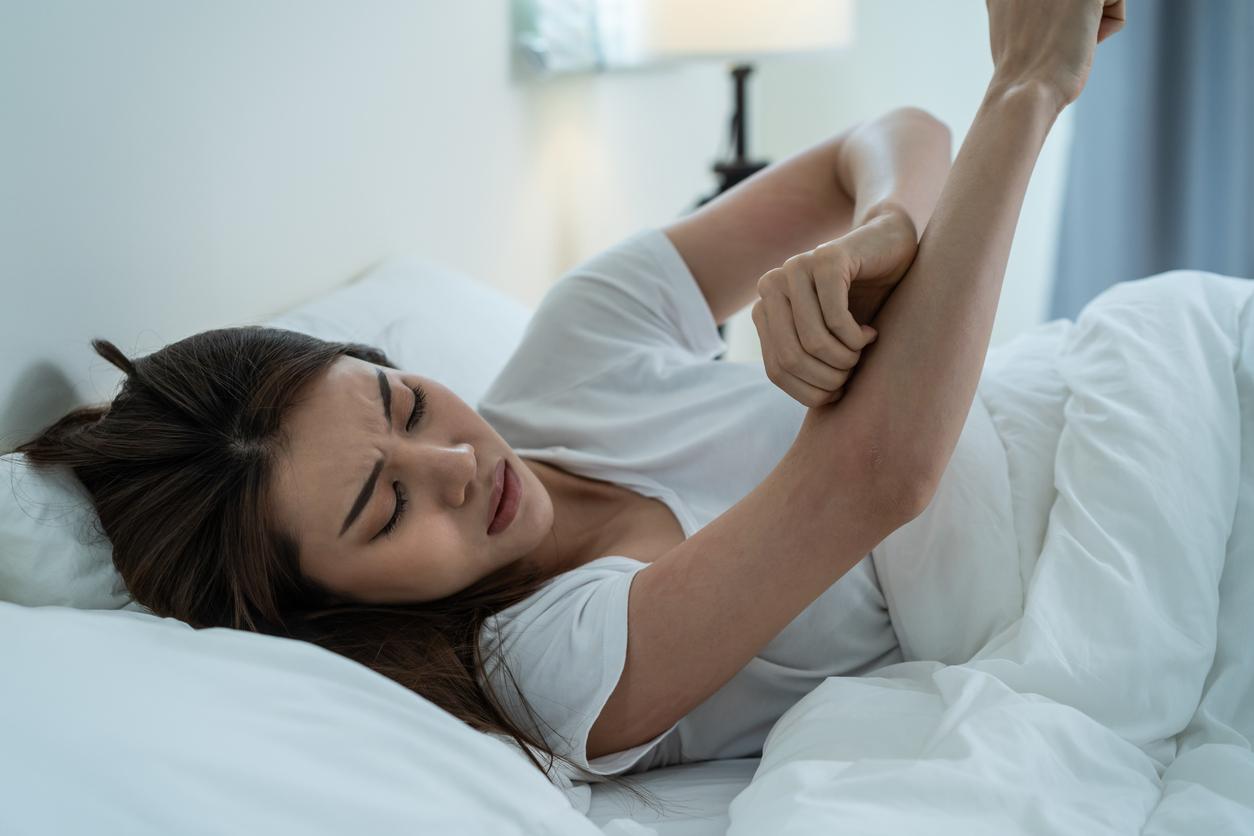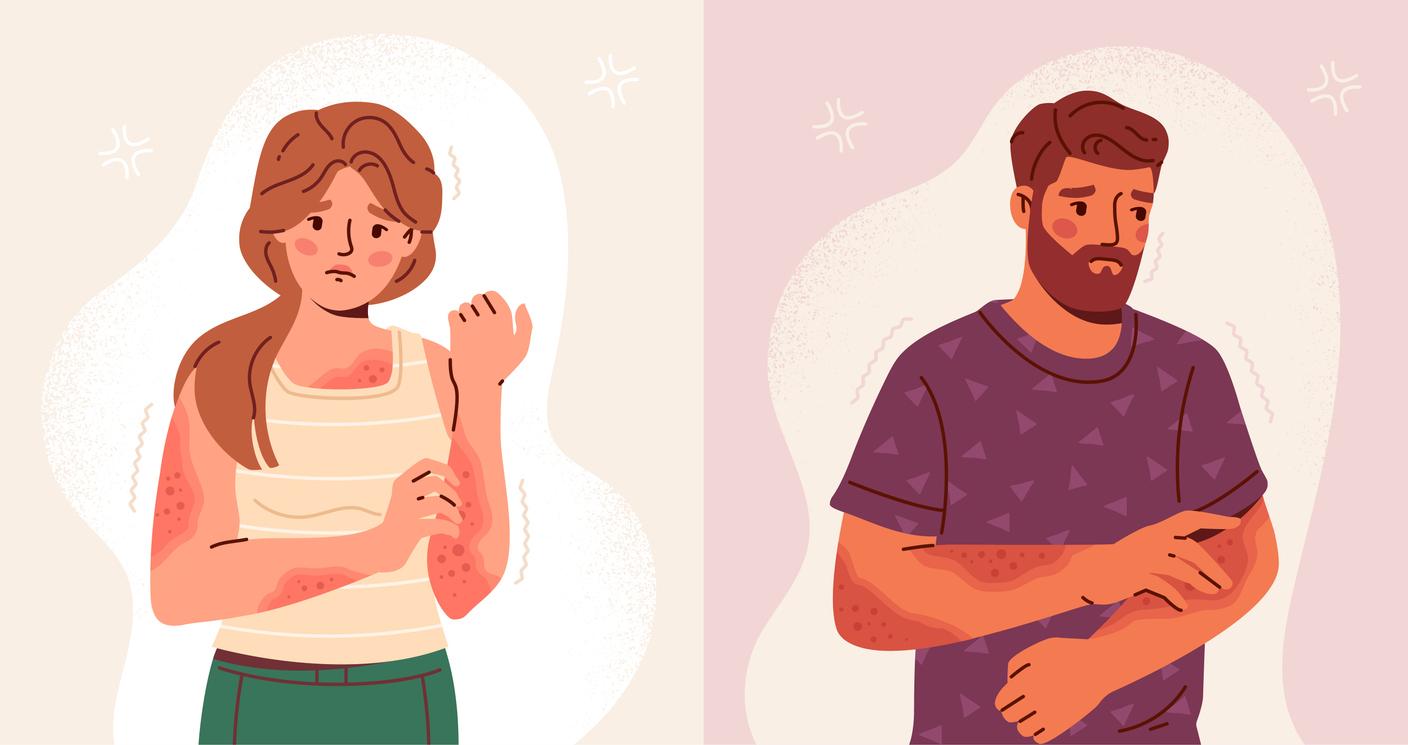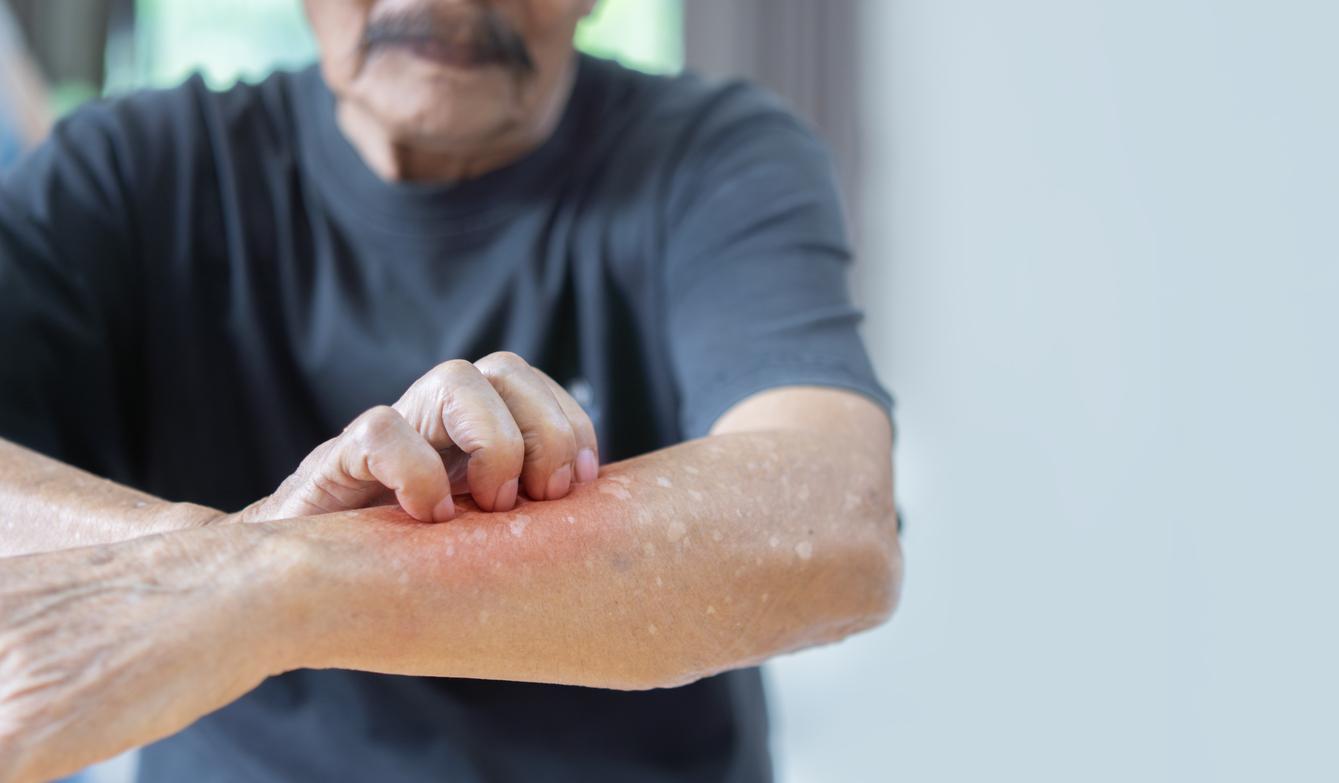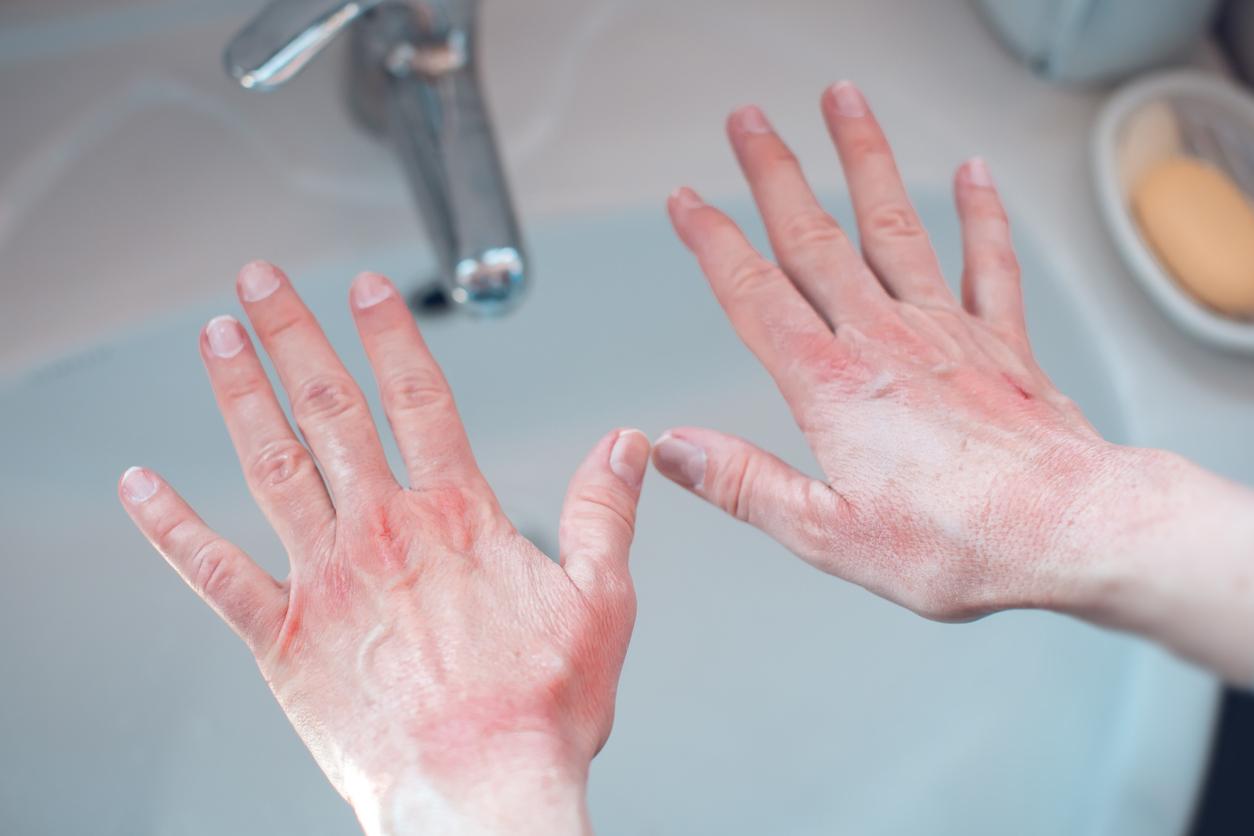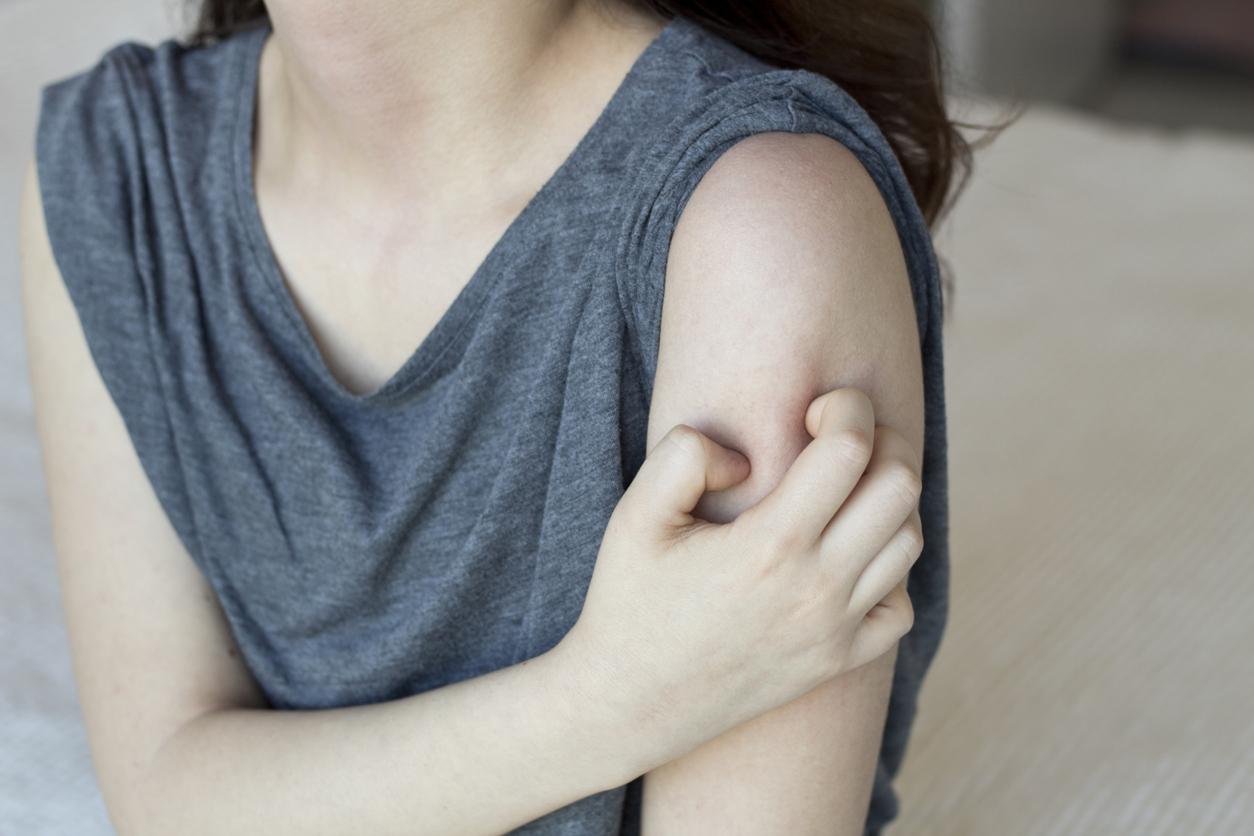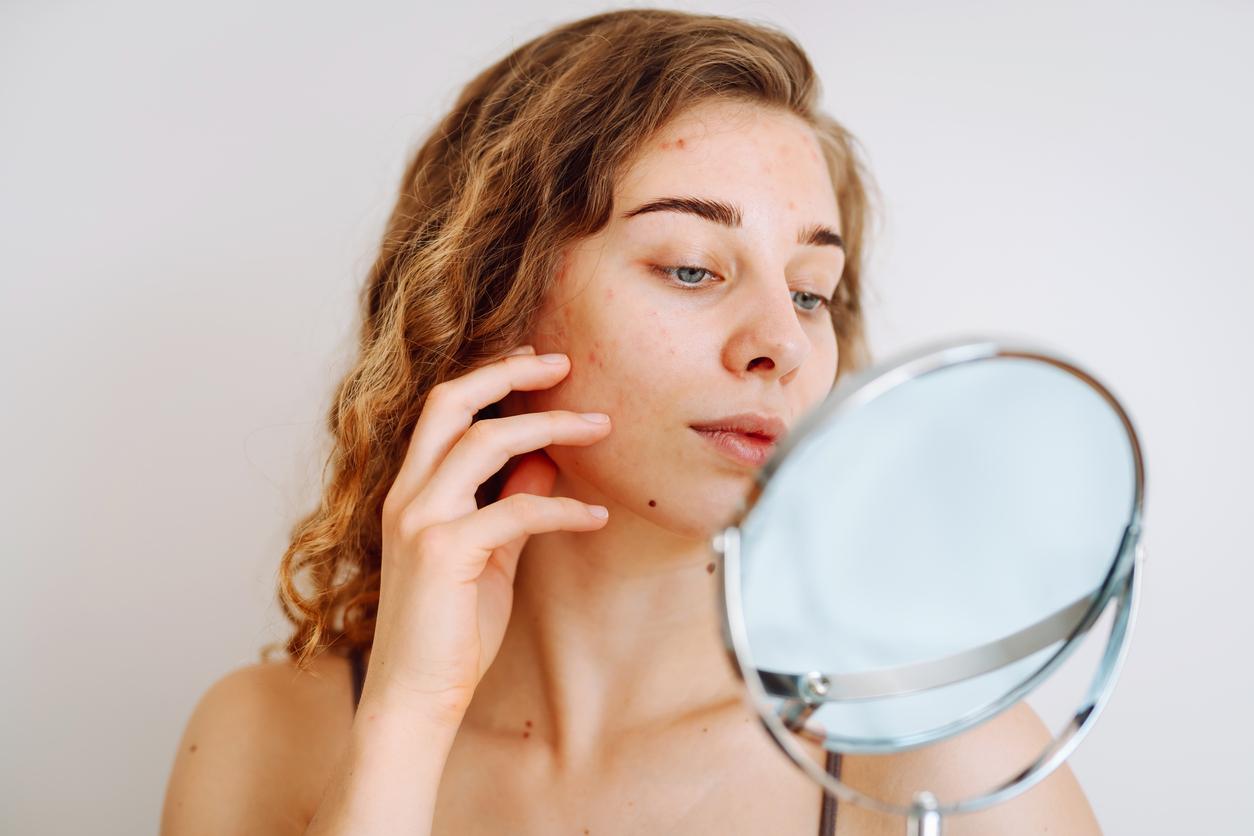When eczema sets in…
Around three months, small red patches appeared on your infant’s cheeks, near the ears. His skin has become granite, as if made of a multitude of grains of sand! Quickly consulted, the pediatrician dropped his diagnosis: atopic dermatitis! A diagnosis that is becoming almost commonplace since the number of children with dry skin or “pre-eczematous tendency” continues to increase without being able, for the moment, to find the cause of this galloping condition. .
With each “flare” of eczema, red patches and small blisters appear on the face, chest, in the folds of the elbows and knees and on the thumb that your baby sucks. The disease is neither serious nor contagious but it poisons the life of your child who has only one desire: to scratch! However, by scratching, it will cause lesions in which allergens from the environment engulf themselves happily. The epidermis was inflamed, there it is superinfected!
When there is superinfection, an appointment with a pediatric dermatologist is required. Emollient creams are no longer enough: he alone can determine the “two-speed” treatment which makes it possible to fight against both inflammation and secondary infection. This treatment is essentially based (with the antihistamine syrup which relieves the itching) on the daily application of a cortisone-based cream, which is called a “dermocorticoid”.
No fear: the now very common use of these ointments based on cortisone or very low concentration derivatives gives excellent results, without any risk! In local treatment, these anti-inflammatories are very well tolerated by children, even small ones, provided they follow the pediatrician’s prescription to the letter and do not self-medicate.
To find out more about infant eczema with EurekaSanté, the general public medical site published by VIDAL.
Space out relapses
Used in continuous treatment for eight to fifteen days, then in decreasing treatment, topical corticosteroids allow rapid regression of the lesions. But never forget that eczema is a chronic disease that evolves in a totally anarchic way! Sometimes the treatment comes to an end, sometimes this condition persists latently and reappears on the occasion of a dental breakthrough, a viral disease (otitis) or contact with an allergen (animal hair, mites ).
However, some gestures can space out the thrusts:
– Perspiration dries out the skin, so don’t wear too tight clothes. And not woolen clothes but cotton again and again.
– Avoid excessively dry or overheated atmospheres. If necessary, place an air humidifier in your child’s room.
– Too long hair can irritate the neck and the area behind the ears. So: we cut her pretty baby curls!
– Between two flare-ups, never forget to apply a moisturizing milk or cream for atopic skin twice a day.
– Opt for homeopathy: it is known that the granules of Rhus Toxicodendron and Anagallis calm the itching. But the background treatment for eczema must be adapted according to the characteristics and locations of the condition. No self-medication: make an appointment with the homeopath.
– Take your child to a spa treatment: this is possible from the age of 6 months for stubborn eczema that “resists” various treatments. Every morning for three weeks, your little curist will receive treatments (baths, showers, sprays) which decongest and soothe his skin. Thermal water is also used for the preparation of baby bottles.
To find out more about infant eczema with EurekaSanté, the general public medical site published by VIDAL.
No summer break
We like to think that summer is better. And it is true that cutaneous atopy improves frankly thanks to the role of UV rays which attenuate inflammatory reactions and have an often beneficial action on eczematous lesions But be careful: at the seaside, sand and water will have a particularly irritating effect on the already inflamed skin of your atopic baby. No question of prohibiting him from holidays by the sea, but still take certain precautions:
– After each swim, rinse your child’s skin with running water to avoid the abrasive effect of salt on his skin.
– When he plays in the sand, regularly spray his face and forearms with a spray of thermal water with soothing and softening effects.
– If he has an outbreak of eczema, protect the irritated area with hydrocolloid dressings. Very thin, they do not adhere to the skin and protect scratched areas from secondary infection.
– Every evening, massage with an emollient product with anti-irritant properties to counter the combined drying effects of sand, wind and seawater.
And do you say that eczema often disappears as it appeared, around the three years of Baby. Only 10% of babies with atopic dermatitis will still suffer from it in adulthood. In most cases it will evolve into “contact” eczema, that is to say in reaction to contact with certain materials (synthetic textiles, dyes, detergents, etc.). So be patient!
To find out more about infant eczema with EurekaSanté, the general public medical site published by VIDAL.










